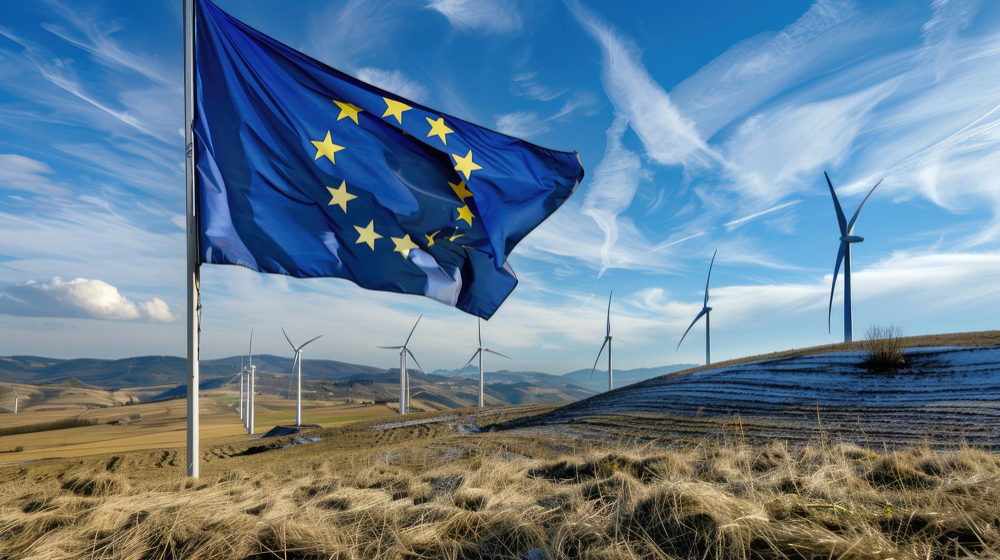Statement by President von der Leyen at the joint press conference with Executive Director of the International Energy Agency Birol

Good morning everyone,
And a very warm welcome to you, Fatih Birol. Let me thank you and the International Energy Agency for the excellent cooperation we have developed over the years. In recent and mostly difficult times, we have always been able to rely on each other. I am very much looking forward to working with you another five years.
In one month, we will mark 1,000 days since Russia’s full-scale invasion of Ukraine. 1,000 days of absolute cruelty from the Kremlin. Since the beginning, they have been targeting Ukraine’s energy infrastructure to try and plunge the country in the dark. Half of all the country’s energy infrastructure has been destroyed. This is approximately the equivalent of the capacity of the three Baltic States together. So it gives you an idea of the brutality of these attacks.
And just two weeks ago, on 26 August, more than 230 missiles were launched during a 12-hour attack. They were directed at power stations, substations and other key infrastructure. Millions of Ukrainians were left without electricity for several hours. As Ukraine’s friends and partners, we must do all we can to keep the lights on. And as winter is approaching, we must keep the brave people of Ukraine warm, while we are also keeping the economy running.
The objective is to address the immediate needs of the population while we make Ukraine’s energy system more resilient in the long term. Overall, Ukraine needs 17 gigawatts of power capacity for this winter. So today, I want to propose action in three areas: repair, connect and stabilise.
Let us first have a look at the element repair: 80% of Ukraine’s thermal plants have been destroyed, and a third of its hydropower capacity. So this is where we will concentrate our repair efforts, with the aim of restoring 2.5 gigawatts of capacity this winter. That is approximately 15% of Ukraine’s needs.
And we will continue coordinating all possible support from our Member States, through the Civil Protection Mechanism. So far, we have managed to send more than 10,000 power generators and transformers, and more help is coming. As we speak, there is a full thermal power plant that is being dismantled in Lithuania and shipped piece by piece to Ukraine, with our support, and then rebuilt in Ukraine. This shows the great length of the European Union’s and Member States’ willingness to support Ukraine.
The second element to help cover Ukraine’s needs for the winter is the export of electricity – we call it Connect.
You might recall – the synchronisation of Ukraine’s grid with ours that we had started in February 2022, just as Russia’s war broke out. Back then, we had planned to do this connection of Ukraine’s grid with the European grid over the next two years. But when Russia attacked, we did all we could to speed up this process. And instead of two years, Ukraine’s grid was connected to the European one in two weeks. This allows us now to export the much-needed power to Ukraine. We export 2 gigawatts of electricity to Ukraine, which also covers roughly 12% of the country’s needs for the winter.
It compensates for example the equivalent of the loss of power generation from the Zaporizhzhia nuclear plant, that is, as you know, now under illegal Russian control. So all in all – with our two pillars, repair and connect, we cover over 25% of Ukraine’s needs for the winter. The big bulk has of course to be produced in Ukraine.
My third point is on our work to stabilise the flow of energy in the country. We are boosting decentralised production of energy. This includes rolling out more renewables in the country. As you know, solar panels on rooftops are harder to hit and easier to repair than large central infrastructure. And while it helps secure a steadier flow of energy in the country, it also pushes forward Ukraine’s energy independence and the clean transition. We are for example dispatching solar panels to 21 hospitals in the country to ensure continued energy supply.
Eight of them should be fully equipped by this winter. We are also sharing expertise and working together with Ukraine on cyber awareness and cybersecurity to make their energy system more resilient.
These three objectives – repair, connect and stabilise – require significant financial support. Overall, we estimate that our support to Ukraine’s energy security since February 2022 amounts to at least EUR 2 billion. And that is a low estimate, because it does not take into account all in-kind donations. And today, I can announce that we will make an additional amount of close to EUR 160 million available for this winter. This includes EUR 60 million in humanitarian aid – for shelters and heaters for example – and it includes around EUR 100 million for repair works and renewables. These EUR 100 million come from the proceeds of immobilised Russian assets in the European Union. Because it is only right that Russia pays for the destruction it caused. We know more is needed. So we must keep transferring part of the proceeds from immobilised Russian assets to Ukraine’s energy resilience.
In two weeks’ time, the heating season starts. As temperatures are dropping, the European Union is ready to step up its support to Ukraine. We are preparing for the winter together. After this press conference, I will be travelling to Kyiv to discuss these matters in person with President Zelenskyy tomorrow. In our efforts to help Ukraine, I am very glad that I can count on the continued support of the International Energy Agency.
